Getting UnstuckIt's a rare beast that doesn't get stuck from time to time. For most of us, getting stuck in the land of demotivation is all too easy and all too common. So many things get in the way and suck us into the abyss of inactivity. Whether it's work, family, vacations, illness, injury, unrealistic expectations, overdoing it, or one of the biggest causes--negative self-talk, there are things you can do to pull yourself out and get back on the path to fitness. I want you to really appreciate that simply recognizing that you have control over your path to fitness means you have the power to create the outcome you really want. So, with the recognition that you are ultimately in control, but because we're all different and we experience the world around us in different ways, you may find that some of the ideas listed below work for you and some don't work for you right away. Be willing to give everything a try, take notes, and analyze the result. If it works, use it, if it doesn't, even after giving it a solid shot, try something different.
Mindset First a quiz: Think about the following, "Imagine a whirlpool. If you're outside of the whirlpool, you don't feel the power of its draw. As you get closer, and start getting sucked into the swirl, you begin to feel the strength of the energy pulling you deeper toward the center. You gradually pick up speed as you move toward the center until you are pulled into the vortex." Before reading on, answer the question "what happens next." Does your ending most closely match: (A) You drown. (B) You manage to fight against the force and pull yourself out. (C) You are transported to a tropical paradise where you are sipping fresh coconut juice and getting a massage. There is no right or wrong answer, but this question gives you an opportunity to pay attention to your inner self-dialog. If you chose C, your mind took you to a positive and beneficial outcome. If you chose A or B, consider that your mind took you either to a place of failure or a place of struggle. If given the opportunity to go back and select a different answer, would you choose C? If you answered yes, realize that you have the same ability to change your mindset, and just as easily. Think of a positive mindset as a muscle that has to be exercised in order for it to be strong enough to prevail when the heavy lifting is needed. So, the first place to start is to come at life with a positive, can-do attitude. And every time that you notice that you are out of alignment with having a positive, can-do attitude, switch it back on. (It doesn't matter if you need to do this 1000 times per day or once, just pay attention to your attitude and do it!) Because we humans are great at putting obstacles in our own way, it's also a good idea to have an understanding in how it is that we turn ourselves away from that positive, can-do attitude. To gain that understanding, we need to examine the path that lead up to today. We don't need to get stuck on anything or judge ourselves, but simply notice what can be learned from the events that lead us to the present. Further, with the knowledge we've gained we can notice the obstacles before they're blocking our way and choose a different path. Knowing that you can turn on your positive, can-do attitude at will and can choose a different path to avoid obstacles, the big question of "why" needs to be answered. Why are you on the path to fitness? It's important to dig deep here and be super honest with yourself. Don't just rely on the first answers that come to your mind. Whatever answers you come up with, ask why that reason is important to you. Again, ask why that reason is important. Only you need to know the true reasons why you want to be on the path to fitness, so, again, be super honest with yourself. The reason you need to do this is because often times the first reasons that come to mind aren't going to provide sufficient motivation to keep turning on that positive, can-do attitude when your mind is enticing you to do things that take you away from the path. Goals I advise people that there are two types of goals. Process Goals and Outcome Goals. When most of us set goals, we tend to set outcome goals. "I will lose 25 lbs" or "I will gain 5 lbs of muscle" are these sorts of goals, and ones that my clients initially arrive with. What I tell them is that those are fine targets, but they are problematic goals. The reason is that outcome goals are usually made with a crystal ball approach. We don't really know if what we are setting for a goal is appropriate, accurate or achievable or if we will change course. Instead of outcome goals, we can set targets, but what will actually help us get there are the processes we put in place to change our lifestyle and the subsequent manifestation of that lifestyle on our bodies. By focusing on the day to day elements of our actions, the results take care of themselves, and it's directly measurable, doable, and sustainable. The four major elements we need to focus on are consistent moderate to vigorous movement, consistent attention to appropriate nutrition, consistent reorientation toward a positive can-do mindset and consistent rejuvenative and regenerative practices. This is one of the area where the professionals here at Proactive Evolution Fitness help you shine because we set you up with a plan and help you stay motivated for these daily processes. Planning When I say planning, I'm talking about thinking through the ways you might be sabotaged and coming up with strategies to avoid those roadblocks or diversions. Of course, you can't think of everything, but start with the areas where you have been sabotaged before. If you find that you're not working out because after you get home from work you don't want to leave the house, try packing your gym bag and going to the gym before you go home. If you find you're eating cookies and candies at work, plan to eat something healthy by bringing snacks that aren't going to take you off course. Just keep adding to your library of appropriate responses and then when situations arise, you'll be ready to respond. Rejuvenation Real growth happens in those moments when you relax and allow the stresses you place on your mind and body to dissipate. What that means is that when you workout hard and you fight against all the ways you sabotage yourself, you also need time in your week where you let go. At the beginning, give workout three to four times per week, and once a week, allow yourself an indulgence meal. As you start to get comfortable with your fitness practices, say after every two or three weeks, decrease the number of non-exercise days, and continue that until you are working out 6 days per week with one rest day. The weekly indulgence meal is just one meal per week where you can eat whatever you want. Plan it. Put it in your calendar. Whether it's a waffle breakfast on Sunday morning or a night out with your friends on Friday evening doesn't matter. Letting yourself have whatever you want for that one meal still puts you in the 95% success rate. The interesting thing that I found on my weight loss journey was that as time progressed I began to actually notice the difference in the way my body and mind felt after I ate things which before were my go-to indulgence foods. When I ate those favorite indulgence foods I felt bloated, sluggish, depressed or distracted. From that space of not feeling And don't forget using social inspiration and perpetual motion to your advantage. More on those elements to come.
0 Comments
Want to increase your fitness? Pay attention to your recovery!If you spent every waking minute exercising, or for that matter, even just an hour of hardcore training every day of the week, you'd end up broken instead of stronger. The reason is that you don't get stronger from training, you get stronger from the process of repairing the muscles that you worked out. When you apply resistance to your muscles, whether with bodyweight training, unconventional weight training, or standard weight lifting, you create micro-tears in the fibers of your muscles. As these micro-tears heal, they increase the size and quantity of muscle fibers, and thus your muscles grow stronger. Additionally, as you would expect, those micro-tears increase the level of inflammation in your body, with all of the resulting chemical responses. This inflammation, along with the release of stress hormones such as cortisol, cause systemic damage in the body which can result in additional health problems. At best, over-training never allows those muscle fibers to repair properly nor allows the inflammatory and stress responses to diminish. At worse you set yourself up for injury. Either way, you quickly plateau and end up not making the progress toward your goals that you want. All this is to say that recovery and rejuvenation are vital to getting stronger. 9 Ways To Optimize Your Training For Maximum Strength, Power, Endurance and Mobility. (In no particular order:)#1 Refuel your body after your workout.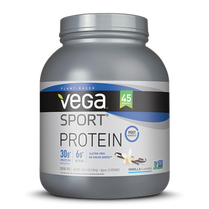 Your muscles need two macronutrients to refuel and recover. Protein and carbohydrates. Dietary protein gets broken down into the component amino acids by the body, and those amino acids are then transported to the muscles and resynthesized into the proteins that the body uses to rebuild and repair the torn muscle fibers. There is an optimal quantity and window within which to consume protein following your workout. As a general rule, consuming about 0.2g to 0.4g of protein per pound of bodyweight within 90 minutes after a workout will have the best effect. Carbohydrates don't do much in the way of repairing your muscles, but they do get broken down in the body and stored in muscle cells as glycogen. Glycogen is a raw ingredient in the synthesis of Adenosine Triphosphate (ATP), which is what muscle cells (and all cells) use as fuel for cellular function. After a hard workout, the glycogen has been depleted from your muscle cells and needs to be replaced. Unlike protein, you can simply consume carbohydrates according to your normal daily needs over the course of the day and you'll refuel. However, having a light carbohydrate snack prior to a workout can help give you a bit of extra energy. #2 StretchYep, stretch. I know you don't have time to stretch after your workout, and it seems so difficult and painful and you don't see the value... But stretching helps condition your muscles, increase range of motion, improves mobility and reduces muscle spasms. Static stretching, where you hold your stretches for 30-60 seconds is ideal following exercise. One thing that I notice among a lot of people is a lack of awareness of good stretching technique. If you've never been trained to stretch, I recommend that you work with a trainer or yoga instructor to learn how. #3 Self Myofascial Release and/or MassageSelf Myofascial Release (SMR) is also known as "Foam Rolling", promotes muscle relaxation and by extension, increased fluid exchange (blood and fascial fluids) to help lubricate muscles and increase range of motion. Roll the upper back, lats, chest, glutes, hamstrings, quads, calves, hip flexors, abductors and adductors. Start off by rolling across larger swaths of muscle and fascia until you find a location that is sore or painful. Spend 30-60 seconds concentrating on each of those sore or painful areas. It may not be comfortable while you're doing it, but it will feel so much better later. A lot of research recommends against rolling the lower back or directly on the spine. To hit the muscles that run up either side of your spine, there are several options, but a "peanut" is our favorite. As for foam rollers, we like the Grid and Grid X Rollers by Trigger Point Therapy because they're well made, won't break down quickly and does the job better than almost every other roller. Regular massage also helps to reduce soreness and increase flexibility and mobility as well as contribute to emotional and mental wellness. To get the best effect for your muscles, go for deep tissue or therapeutic massage as opposed to Swedish or relaxation massage. One last SMR point to keep in mind... SMR before sleep has been shown to improve the quality of slumber, which brings us to our next point... #4 SleepScience has shown that if you don't sleep, you can expect to get fat and weak. Lack of sleep results in lower growth hormone release, higher cortisol (stress hormone) levels and decreased insulin sensitivity. In other words, not sleeping will put you into a pre-diabetic state, causing increased weight gain and health problems. On top of the physiological impact, there's the psychological element with mood being generally depressed. Together, they help reinforce each other. How much sleep do you need? A minimum of 7 hours per night is good with the ideal being closer to 8 hours per night. There are plenty of resources available to help you get an idea of how you're sleeping and to help you sleep better. The main way to help make sure you get enough sleep is to consistently go to bed at the same time each night and wake up at the same time each morning. You may need black-out curtains and either ear plugs or even better, a white noise generator (I use the "White Noise" app by TMSoft for Android and iOS). #5 Meditation Meditation can have amazing effects on both your body and your mind and doesn't have to be a torture session. One basic method is to do "shape breathing". In this case, I'll describe "Box" breating. Get comfortable, start 4/4/4/4 breathing--Breathing in through the nose, filling the belly until it is distended to a count of 4. Hold your full belly and lungs for a count of 4, then exhale through your mouth for a count of 4. Finally, hold with empty lungs for a count of 4. Then repeat.) Your mind will do what minds do...wander. So, whenever you find your mind drifting into thoughts, just bring your attention back to your breath and start again. Start out at 2 minutes per day (set a timer on your phone with a nice soft chime) and increase from there. It's normal for the mind to wander, but you want to simply not go with it. Witness your thoughts like clouds floating across the sky rather than being a part of them. The idea is to witness more and engage less with the wandering of your mind, and be aware of when you're doing both. Just like sleep, meditation seems to work best if you do it at the same time every day and in the same location. Deep, 4/4/4/4 breathing and meditation will promote relaxation, a positive mental outlook and increased blood oxygen which will help lower the pH in your cells. If you'd like feedback on when your mind is wandering, the Muse Headset is our go-to biofeedback device to improve meditation . If you're a bit more advanced in your meditation practice, you may be interested in the Lifeflow meditation tracks. Using sophisticated brainwave entrainment technology, these audio tracks channel your brain wave frequency into specified ranges, improving the depth and ease of meditation. #6 Active Recovery ExerciseGive yourself recovery days between your hard-hitting workout days. But, don't just sit around. Walk, do some calisthenics, battle ropes and slam balls are great. Of course, yard work, house cleaning, and the like are great ways to get your light workout in and being productive in your life too. The idea with the light workout is to increase the blood flow to the muscles you've been training in order to provide nutrients to the cells as well as flush away metabolic waste products. Aim for a light 30 minute workout with your Target Heart Rate being around your 50% Heart Rate Reserve (HRR). To get to the right Target Heart Rate, you'll need to do some calculations. You will need the following values:
MHR According to Lifehacker, Maximum Heart Rate can be best calculated as follows:
RHR Ideally, check your heart rate everyday for a week before you get out of bed in the morning. Then take the average of those values. Of course, lots of fitness monitors will also calculate your RHR. HRR HRR = MHR - RHR. Target Heart Rate Target Heart Rate = (HRR x %intensity) + RHR. Again, go for about 50% intensity. Also, it's a good idea to keep track of your RHR because it can be an indicator of over training. If you see your RHR going up consistently, and over 10% of your baseline, dial back your workouts until your RHR is back within your baseline range. #7 Rest Day(s)One day per week, give your body a rest to allow your stress levels to lower (from life and from all the exercise you're doing). This is a great day to do more sedentary and super low intensity activities. A stroll down the trail or on the beach, walking the dog, preparing food for the days ahead, getting massages, meditating, etc. are all good ways to give your body a rest. Of course, since you're not burning the usual number of calories, it's important to eat appropriately on this rest day rather than over-fuel your body, which will counteract all the great work you're doing. #8 Nourish Your BodyA well nourished, perfectly-fueled body has what it needs to generate muscle, burn fat and provide energy for all the activities you want to do. Focus on eating lots of vegetables, especially the dark green leafy kind. Get plenty of protein (0.4g-0.8g of protein per pound of body weight per day), healthy fats (olive oil, hemp seed oil, flax seed, avocado) and moderate amounts of complex carbohydrates (whole grains, brown rice, natural whole fruits.) By staying away from fast, low quality, high-calorie, low-nutrient, refined foods, you'll feel better, look better and have the energy to power you through your workout and everything that gets thrown at you during the day. #9 Hydrate Water! Drink lots of it. Drink between 64 oz and 1 gallon (2-4 liters) per day. Everyone know you need water to survive, but you also need it to thrive. Studies have shown that even low levels of dehydration can result in a significant decrease in your power output. Additionally, water will help you feel fuller, helping you to reduce your caloric intake. Diuretic liquids like coffee, soda and tea, which make you need to urinate more than you consumed, do not count toward your daily goal. Sweetened beverages also don't count because of the negative effect they have on your body. Tips to make sure you drink enough:
(Bonus #10) ElectrolytesElectrolytes (sodium, potassium, calcium, magnesium and phosphate) are mineral salts that your body needs for proper cellular activity and for nervous system function. They also regulate the amount of fluid retained by your body, including blood volume. Additionally, if you find you're getting cramps after workouts, it may be a sign that your electrolyte levels are low. Vega Sport Electrolyte Hydrater tastes good and isn't filled with artificial flavoring or sweeteners. Also, Sport Legs has been a big help in reducing and eliminating cramps following long training sessions.
Fewer Americans Care About Being OverweightAs of 2014, two out of every three Americans is overweight or obese. That's right, 66% of Americans tip the scales into the unhealthy territory and the trend upward is continuing. By now, everyone should know about the risks for diabetes, cardiovascular disease, metabolic disease, and biomechanical dysfunction and degeneration that comes with weight gain. But, it seems that rather than doing something to try to rectify the situation, being overweight or obese is becoming normalized. Research published in the Journal of the American Medical Association (JAMA, 7/March/2017) shows that even though more people are overweight and obese, fewer are trying to lose weight. In 1988, 56% of overweight and obese individuals reported that they had attempted to lose weight during the previous year while in 2014, only 49% reported attempts to do so. There are a variety of reasons for this drop in the number of people who are attempting to lose weight, but as already mentioned, the most prevalent reason seems to be social normalization. Social NormalizationThe social normalization of overweight and obesity has increased dramatically over the past few decades. As the number of overweight and obese people has increased, the novelty or uniqueness of larger body sizes has been reduced. In other words, we become more used to seeing and interacting with overweight and obese people and thus it becomes more socially acceptable. And as it becomes more socially acceptable, heavier people begin to be more accepting of their weight and less inclined to do anything about it. Additionally, as children grow up in families beset with overweight and obesity, they think that such body sizes and the root causes of overeating, poor nutritional choices and a sedentary lifestyle are normal. This inter-generational element is perhaps the most alarming as it portends a future where the majority of the population is afflicted with diabetes, metabolic syndrome and cardiovascular disease. From a simple economic perspective, the lost productivity and increased health care costs to treat such a population is moving toward the astronomical. From a human perspective, the loss of quality of life, the increase in disease and the shortening of lifespans is incredibly troubling. What is to be done?What can be done to change trend away from overweight and obesity? The first thing to do to reduce increase of overweight and obesity is to prevent weight gain in the first place. While many on the political right abhor the concept of the "nanny state," it is abundantly clear that we cannot rely on overweight or obese parents to teach and direct their children to eat appropriately and engage in strenuous physical (playful) activities. Much like the anti-tobacco campaigns that have helped reduce the incidence of smoking, anti-obesity campaigns must be put in place if we are to be successful. We must turn the trend away from the normalization of overweight and obesity, and the only way to do that is through a concerted and coordinated effort in the schools, media, and public policy.
It's time to HIIT the gym...
New research published in the journal Cell Metabolism (Volume 25, Issue 3, p581–592, 7 March 2017) has shown that Metabolic Resistance Training can reverse the cellular ageing process in adults. While the Mayo Clinic researchers didn't mention Metabolic Resistance Training by name, they showed that those who did high intensity interval cardio training (HIIT) combined with resistance training (what they called "combined training") combated some of the cellular aspects of aging. The study was designed so that participants (Ages 18-30 and 65-80) were divided into groups with some doing High-Intensity Interval Cardio Training (HIIT), some doing resistance training and some doing Metabolic Resistance Training (MRT) over a 12 week period. Regardless of the modality of their exercise, all participants saw improvements in lean body mass and insulin sensitivity. However, only the HIIT and MRT exercisers showed improved aerobic capacity, an improvement in mitochondrial function for skeletal muscles (69% improvement for the older exercisers), and improved muscle protein synthesis and muscle protein content. Further, the study authors noted that the MRT exercisers also increased their muscular strength and the older participants had a 21% improvement in oxygen consumption. The resistance only exercisers saw none of those benefits. Fitness is a multifaceted state of being.We often think of the principal drivers of fitness--exercise (strength, motility, power, agility, stability, flexibility), nutrition, mental outlook, and rejuvenation--as independent components. We forget how each of those drivers depend on each of the other drivers to create what we call fitness. The most easily recognized example of our focus on individual components is how we think a diet is the solution to weight gain. But losing weight is not the same as becoming fit. In fact, there are many people who are thin, but I wouldn't call them fit. How about the person who exercises 2 hours per day, 6-7 days per week but eats junk food. And don't forget about the person who eats like a bird but has a hard time lifting light hand-weight several times. Then there's the person who works out regularly and eats well but continually floods their system with cortisol due to living an unmitigated high stress lifestyle. And then there's the person who is very strong but can't move easily or run up a few flights of stairs or they're flexible but doesn't have much power or strength. With an awareness of the multifaceted nature of fitness, it becomes clear that a holistic approach to fitness is necessary. We can't just workout or just diet or just meditate or just stretch. We need to do each of them, and do them with a positive, mindful, motivated and playful mental outlook. Fitness is a path not a goalWhen I was obese, I thought that if I just lost the excess weight, I'd be finished. It is a common belief. But a quick look at the the literature shatters that belief. According to the International Journal of Obesity (Int J Obesit 2010;34:1644–54), between ~60% and 95% of those who lose weight will gain it back, and the more weight that is lost, the higher the likelihood that it will be regained. The question of why this happens comes down to a variety of factors with the evidence pointing to biology, psychology, and physiology. With the people I've worked with who came to me after they regained the weight they lost, what I saw was that they had been successful in their weight loss only by changing one area of their life. Some increased the amount of exercise they did. Some decreased the amount of food they ate. Some engaged in mindfulness or meditative practices. But none had changed their lifestyles completely. Conversely, those who undertook fundamental lifestyle changes that included increased exercise, improved nutrition, meditative practices and positive mindset were successful in not only weight loss but fitness. How to regain fitnessFrom the place of fitness, it is much easier to recover from a lapse in any of the individual components. I can attest from personal experience that this is the case. Some months back I was injured. To be honest, I don't recall how I got hurt, but I woke up one morning with extreme pain in my shoulders and neck. It was devastating. I could barely move my arms without pain shooting through my neck and the slightest turn of my body caused my shoulders to feel like I was ripping them out of the sockets. After about a week of this I started to get very worried. My mindset crashed along with my exercise routine. Where I had been working out to the tune of an extra >1200 calories burned per day, I was idled. Had exercise been the only pillar of fitness that I developed, I could have gained a lot of weight. Fortunately, thanks to my meditation practice and mindfulness of my eating, I was able to pay attention to the disconnect between what I was eating and signals my body was sending me about how much food I needed. It was in the depths of my physical pain that I forced myself to pay more attention to my nutrition both from an emotional and a habitual perspective. When we feel horrible, when we're afraid, it is easy to attempt to pacify the emotional upheaval with food. The feel-good brain chemicals that get released as a result of a favorite food are what is truly addicting about the food. When exercise is curtailed along with the emotional component, it is important to have a mindfulness about the body's nutritional needs. For the first few weeks of my injury, I continued to eat habitually. In other words, I continued to consume food as if I was still burning an extra 5000-6000 calories per week. Within three weeks, I had gained 5 lbs. Thanks to having a mindfulness and meditative practice that raised my awareness, I was able to catch myself before things went too far off the rails.
So, it's the last day of 2016. It's been a big year in so many ways. Regardless of whether you met your goals this year or not, you have one last day to redeem yourself or take another step over the top. Make sure you read all the way to the end, as I have a gift for you.
There's a lot of anecdotal evidence that setting goals is key to achieving what you want out of life. But so many of us set fitness goals on the 1st of January and then forget about them by the next day. Why we do that has a variety of very deeply rooted reasons, but ultimately there are a few things we can do to help keep us on track and building successes. Here's what you can do starting today to make sure your goals aren't a casualty in 2017: 1) It is important to set two types of goals for each desired outcome -- Process Goals and Outcome Goals.
2) It is important that your goals are stated as SMART Goals. Both Process Goals and Outcome Goals need to be stated in a very specific way to help ensure your success. That way is known as SMART. (As a refresher SMART stands for Specific, Measurable, Achievable, Relevant, and Time-bound.)
Here's an example of a process goal and an outcome goal stated in the SMART format. Process Goal: "I will improve my fitness by doing 45+ minutes of moderate to vigorous exercise, burning at least 500 calories per session, on at least three days per week." In terms of SMART, here's how that breaks down. 1.) It's very specific. 45+ minutes; moderate to vigorous; 500+ calories, 3+ days per week. 2) It's measurable. Was it 45+ minutes? Did you burn 500+ calories? Did you do it 3+ days per week? 3) It's achievable. Most people spend more than 45 minutes three days per week watching television or scrolling through Facebook. 4) It's relevant. You're improving your fitness, which is probably why you stated this goal. 5) It's time bound. At the end of each week, you can count back and see how many times you did the exercise. Outcome Goal: "I will lose 25 lbs in 6 months by ensuring that I exercise regularly and watch my intake of calories." In terms of SMART, here's how this one breaks down. 1.) Again, it's very specific. 25 lbs through regular exercise and watching caloric intake. 2.) It's measurable. As you progress toward your goal, you will see the number of the scale fall. 3.) It's achievable. Losing 1-2 lbs per week is the suggested rate of weight-loss progress, so 6 months makes this about 1 lb per week. 4.) It's relevant. You want to get fit and you have a target that is relevant to you. 5.) It's time bound. You have 6 months to do this goal. At the mid point, you should be well on your way to your goal and at the end, provided you did what you said you were going to do, you should hit your target. As a special gift to you, I'd like to give you a transformation goal setting session. The purpose of the transformation goal setting session is to either help you develop your goals for the year ahead or get a goal checkup for the ones you've already come up with. To get your transformation session, just fill out our contact form or call me at 760-56-EVOLVE (760-563-8658). I know you're busy, so the sooner you take action on achieving your goals, the faster you can transform your body, mind and lifestyle. Happy new year, and please get in touch with me soon! Motivating Feelings
There are three primary feelings motivating our desire get or keep fit: Fear, guilt and pleasure. Most of us only consider the first two, fear or guilt, when we think about fitness. When it comes to fear, many people start an exercise program after a health scare that fuels our thoughts of pain, illness or death. It's often from this space of fear that people sign up at a gym or purchase a piece of exercise equipment. This is the point where guilt most commonly comes into play. We feel guilty about the money were spending on an unused gym membership (the average price for a gym membership in the US is $500+/year) or about the expensive ($500-$3000+) exercise contraption that is gathering dust in the corner or we feel guilty because we told our friends and relatives that we were serious about getting fit and the heaviest weight we've lifted was a bag of chips. The problem is that fear and guilt may motivate us, particularly in the short term, but they rarely create the sustainable lifestyle changes that will bring us the physical AND emotional benefits of getting and staying fit. The reason why this is a problem is because operating out of fear or guilt requires us to live in the future or the past rather than in the present. When we're exercising out of fear, we are exercising due to anxiety that if we don't get or keep fit, something bad will happen to us in the future. Not only does exercising due to fear require a lot of will power (because the "something bad" is usually not immediate), but it also requires us to exercise harder because anxiety produces stress hormones which cause the body to store fat. Additionally, because getting fit isn't instantaneous, we fear that we won't reach our goal before the "something bad" happens. This is especially true when it comes to a serious health scare. Exercising out of guilt also requires a lot of will power because we're focusing on a past action that either cost us money or credibility. Often, operating out of guilt breeds resentment (for ourselves, the sales person at the gym or equipment store, our friends/spouse/relatives, etc.) and that's demotivating. Additionally, as with fear, we usually have a stress response to guilt, which causes the body to store fat. In both cases, the negative psychological state that comes with constantly bullying ourselves, actually makes it more difficult to perform the acts that will get or keep us fit. This leads to lower self-esteem, lower success rates and a learned helplessness which becomes self-perpetuating. My friend loves to exercise... Why can't I? We all know someone who seems to love running, cycling, swimming, aerobics classes, boot camps, lifting weights, etc. Most people wish that they had that internal spark that would give them that intense motivation to move and sweat and build their fitness. Depending on our relationship with the person we know who has the spark, we may even ask (or be asked) to tag along, hoping that some of it will rub off on us. But, unless our "role model" is either selfless in waiting for us to catch up or we're able to suppress our egoic urge to compare ourselves, it's unlikely that the internal flame will start to blaze as a result of proximity. In the end, we have to realize that the spark that ignites our passion for fitness has to come from within ourselves if it is going to last. What I and many others have found is that friends and relatives can fan the flames of our passion to exercise, but we have to start and maintain the fire on our own. Why is exercise such a drudge? What does exercising mean to you? For the majority of the population, exercise means hard work. It means accomplishing something--running X miles, lifting X pounds, riding X hours, etc. If you've noticed the emotional response that just these thoughts brought up, you might have noticed the idea that this article started with: Fear and guilt. Most people, even those who have the will power to exercise regularly, are doing it for all the wrong reasons. Think about this: who in their right mind would get on a treadmill and run for an hour? I really think that epitomizes the drudgery of exercise. Likewise, what kind of person is going to go and do the same weight lifting workout week after week, year after year, sometimes decade after decade? Are these the type of people who truly have a spark, a passion, or the ability to fan the flames of your motivation? I doubt it. These are people who may have will power, but they lack the creativity to inspire anyone to fitness greatness. My guess is that their level of fear or guilt is so high that they exercise not because they're passionate but because they're stressed. There is a better way and it's right in front of our eyes. It's not the gym rat or the obsessive/compulsive marathon runner that's going to show us how to find motivation to exercise. It's children! Why do children exercise? That's really a silly question. Children, especially before the age of 10, don't normally exercise. What children do is called play. They run and climb and skip and hop and ride their bicycles and do all manner of physical activities without ever thinking "I need to workout for 60 minutes today." Children run to avoid being tagged. Children climb to get up or down from the playground structure because they're on an imaginary mission. Children skip and hop because they're keeping time to a rhyme. Children can play for hours, in fact all day long, until they're tired and sweaty and ready to fall asleep standing up for the simple reason that they're having fun. Unlike adults, children are not trying to accomplish something by playing. They're playing because they're developing and engaging their imaginations, bodies and social networks. They're playing because they're having fun. Why we stop playing At some point in our lives most of us stop playing and start getting serious. Instead of developing and engaging our imaginations, bodies and social networks, we start challenging them. We start needing to be the best at things and prove ourselves to those around us. We start needing to win. We start needing to accomplish things. It's at this point that we stop riding our bicycles because it's fun and start riding because we need to train or get someplace. We stop running to avoid getting tagged and start running because we're being graded and ranked on how fast we can get around the school track. We stop swimming because we're playing dolphin and start swimming laps for time or distance. We stop playing games and start "playing" sports. Unfortunately, few of us have the natural talent to be Olympic contenders, or for that matter, the talent to be contenders for the top spots in our school. And in an effort to avoid embarrassment, we told ourselves we're not athletes and we stoped engaging in the activities we used to enjoy when we did them for play. Now, as adults, most of us have no idea how to have fun any more. What we think of as fun is a far cry from the way we had fun when we were children. What we think of as having fun usually has a competitive component to it. As a result, we move our bodies to beat a clock or beat a competitor or beat the bathroom scale. Sadly, even if you made it to the top of the Olympic podium, you won't always have the best time, the strongest finish or a fast metabolism. With this, I'm not saying there's anything wrong with competition. I am saying that it's the wrong way to go about fitness. Bring back the fun Pleasure, or fun, is by far the better motivator for fitness. At Proactive Evolution, we've always promoted the idea of Strenuous Play. By bringing playfulness into our exercise, we bring our minds back into the moment. And by making that exercise strenuous, we don't give our minds the opportunity to wander into demotivating thoughts. Here's an example. For about 8 years, I commuted 18 miles each way by bicycle, four days per week. There was a steep 2-mile hill near the end of my ride to work. If I hadn't brought playfulness into that commute, I never would have been able to bring myself to ride over 1500 times. I always pushed myself to keep myself from thinking about how difficult it was to ride up that hill. And, to make it fun, I played mind games. One day I'd alternate sitting and standing the lengths between the bike lane signs. Another day I'd sit one length and stand two lengths. Another day, sit one, stand one, sit one, stand two, sit one, stand three, etc. Another day I'd try pedaling 100 strokes with my right leg and then 100 strokes with my left leg. Other days, I'd chase another cyclist who was very far in front of me and the next day I'd go just fast enough to encourage someone else. Ultimately, I made a game out of climbing the hill. Here are some ways to bring fun back into fitness:
If you have anything that you like to do to make your workout more playful, put them in the comments! Cardio Training: Burning Calories the Old Fashioned WayCardio training--whether it's walking, running, swimming, cycling or getting on the treadmill, elliptical machine, spin cycle, or any of the myriad cardio machines you see in the gym--has long been held as the ideal way to achieve weight loss. The average person spends up to an hour moving their arms and legs at a moderate intensity, keeping themselves in what the machine or their fitness monitor tells them is the fat burning zone.
Exercising in that moderate intensity zone "fat burning zone" burns more calories from fat as a proportion of total calories burned. However, the reality of the situation is that you burn fewer calories from fat than if you increased your intensity level. For example, suppose you spend 60 minutes on the elliptical machine at a moderate intensity and you burn 400 calories, half of which (200) are fat calories. If you spent that same hour performing high-intensity cardio training, you might burn 700 calories, with 300 calories coming from fat. That in itself should make you want to up your intensity because in the same amount of time, you're burning more fat, which means a leaner body. After all, that's why you're spending all that time on the machine! Here's the rub though. Because cardio training is essentially catabolic, meaning it consumes muscle as well as fat, you end up lowering your metabolism over time. Here's how it works: During and after moderate intensity exercise, your body consumes oxygen for a variety of physiological functions. These include synthesizing Adenosine triphosphate (ATP), which is the fuel your cells need to function. It also includes balancing your hormone levels, repairing muscle tissues and nerves, replenishing fuel (glycogen) stored in the muscles for future exercise, and most importantly, restoring your body temperature to resting levels and returning your body to a resting state. Consuming oxygen, however, requires energy (approximately 5 calories per liter of oxygen). Because moderate intensity exercise keeps you in the aerobic state, meaning you are able to consume enough oxygen to perform all of these functions, when you stop, your body quickly cools and returns to a resting state and calorie burn reverts to your Resting Metabolic Rate. In other words, you burn higher levels of calories while you're exercising, but quickly drop back to resting levels. With high intensity cardio training, your body doesn't get enough oxygen to fuel your muscle contractions, and the physiological functions listed above. To keep your body in motion, your body resorts to anaerobic (without oxygen) energy pathways to produce ATP which is far less efficient than aerobic ATP production. As a result, your body goes into oxygen deficit while exercising. Then, after you finish your workout, your body starts to erase the oxygen deficit through what is called Excess Post-Exercise Oxygen Consumption (EPOC). As already mentioned, consuming oxygen burns calories, so while you're in EPOC you're still burning calories. That's great news for anyone trying to lose weight because it means burning calories both during and after the workout. However, because high intensity cardio training ultimately reduces your muscle mass, there's less muscle tissue to repair and fewer cells to refuel, and a lower oxygen deficit. So, your body still reverts to a resting state fairly quickly (within a few hours after you finish.) That's better than moderate intensity cardio, but there's a better way. A Better Way: Metabolic Resistance Training Is More Effective At Burning Fat! The Simple act of adding resistance training into your cardio solves the problem of muscle catabolism. Of course, you could do two separate workouts: resistance training and cardio. But that means spending more time in the gym and my guess is that you're like most people, and your time is limited with professional, familial and social obligations. What we do here at Proactive Evolution is what is called Metabolic Resistance Training (MRT). MRT combines high intensity interval training (HIIT) with resistance training to build muscles and get your body into oxygen deficit, and keeping it there longer so that at the end of your workout, your body will have created a very high oxygen deficit and need to continue to consume oxygen (EPOC) to restore your body to its resting state for quite some time. And as stated above, that means your body continues to burn calories long after the workout has finished. In fact, multiple studies have shown that the MRT workouts can burn calories for 48-72 hours after you've taken off your sweaty workout clothes. So, with just three one hour workouts per week, you can burn more calories than 5 to 6 hours or more of traditional cardio training, plus build a strong, lean, agile and powerful body while you're at it. It is worth noting that MRT will not result in you looking like a bodybuilder. Instead, you will get a ripped physique that will get you noticed without making you look like a freak on steroids. Whether you're a man or a woman, MRT workouts will get you the results you've always sought and admired while saving you time for the other activities that you want to do. For more information on how Proactive Evolution's MRT workouts can fit into your life, click on over to the Contact page and send us a message or call us at (760) 56-EVOLVE! Do it today and get started on the fastest path to fitness, and the body you want! How often do you listen to the words that your mind is saying about you?
If you're like most people, you're completely unaware of the chatter that's taking place inside your head. Instead of talking yourself up, you're letting a super-critical voice run wild, telling you all sorts of negative things about yourself. The result of this critical voice calling out your every flaw (real or otherwise) varies from a lack of self-respect to complete and utter physical and emotional paralysis. Regardless of the impact that your self-chatter is having, if you're not actively aware of what your mind is saying and re-framing the language to the positive, you're doing yourself harm. You've probably spent most of your lifetime, at least from your teens on, developing the habit (yes, it's a habit) of talking about yourself with negative words. For this article, I'm not going to get into specific examples because, well, I want to help you break the habit and change the self talk towards the positive and pointing out the negative only serves to reinforce it. How does self-talk work? Unless you're a Buddha or an enlightened mystic who is able to stop thoughts from happening, you think tens of thousands of thoughts per day. As you do so, even if you're not listening consciously, you're programming your body and subconscious mind to perform as instructed. Whatever your mind says about you, your subconscious takes it in without even analyzing it for accuracy. It's only natural, after all, because your mind knows you better than anyone else knows you, so the assumption is that what is being said is accurate and correct. On top of that, as the mind repeats the same message over and over, the message becomes even more accurate and correct to your subconscious, and the habit is strengthened. What's the first thing to do? By increasing your awareness of the self-chatter--by paying attention to what you are habitually saying to yourself, about yourself--you can recognize when you're putting yourself down and change things up for the better. As you start to listen to yourself, write down what you hear. As you start to recognize your negative self-talk, ask yourself whether you'd respect a friend or acquaintance who said those things to you. Most likely, the answer is no. It's important to remember that it's not only what is being said, but how it's being said that matters. So, while you may indeed be overweight, it becomes exponentially more difficult to change that when you're beating yourself up with negative words. So I'm paying attention to what I'm saying, and I don't like it. Now what? The first thing to do is be grateful that you've raised your awareness. By focusing on being grateful, you are taking the first steps to performing what the experts call "cognitive restructuring." Cognitive restructuring is a therapeutic practice of identifying and disputing cognitive distortions in order to bring about a new way of thinking and behaving. In other words, by identifying thoughts that do not serve you and recognizing that those thoughts are distortions from reality, you can begin to reframe the thoughts into useful and productive messages. The hardest part of all of this is recognizing that the harsh words you say to yourself are indeed distortions of reality. Again, it may be true that you're overweight. However, it's not true that you always fail or that your successes don't matter. There are ten primary cognitive distortions that you can look for which give away the fact that what you're saying to yourself is not true:
OK, I notice the harsh words and I notice that I'm distorting reality. How do I fix it? Here's where practice makes perfect. Because it's likely you've been doing this negative self-talk for a long time, it's going to take effort and vigilance to create a new habit of talking to yourself in positive, uplifting and motivating ways. For example, if you ate more than you had intended, you can recognize what you did ("I ate more than I intended") and then position yourself for future success ("I will pay more attention to the quantity I'm eating and stop when I reach an amount that I specify to myself ahead of time.") It really helps to have a partner to support you as you begin to recognize your negative self-talk and work to replace it with positive and motivating language. Here at Proactive Evolution, we're experts in partnering with our clients to help you be gentle and kind to yourself so that you can change the way you think and talk about yourself. We know that this is one of the most crucial steps in achieving your fitness goals. To schedule your free transformation session and experience the benefits we can bring to your lifestyle modification, contact us at (760) 56-EVOLVE or click over to our contact page and fill out the form. 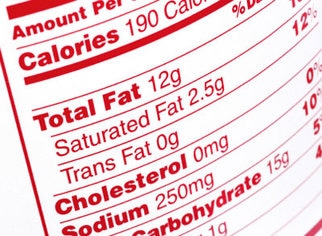 Understanding the information on nutrition labels is a vital skill if you are going to make smart decisions about the foods you're eating. At Proactive Evolution, we suggest that the majority of food you put into your body comes from foods that do not have nutrition labels on them because they're things like fresh vegetables and fruits. And for the remaining foods, we strongly recommend minimally processed foods wherever possible. That being said, knowing the nutritional information of the foods you're eating is extremely important, especially if you want to make sure you're eating healthy and nutritionally dense foods that are good for your body. Reading the Label In the United States, by law, all processed foods are required have a label with the following information:
The nutrition information is all based on one serving. This is important because often people eat more than one serving. For example, how many people eat 1/2 cup of packaged cold cereal? In reality, the average person has multiple servings at a time. As such, the values need to be multiplied by the number of servings actually consumed.
All of these points about hidden calories also apply to the other nutrients as well. Due to the health issues surrounding saturated fat, trans fat, sodium, cholesterol, and sugars, you should also be mindful of those values when reviewing serving sizes. Fats The next item on the label to pay close attention to is the section on the fat content. While fat is necessary for human life, there are different types of fat, some of which are healthy and some of which are not. In general, saturated fat is not healthy. Examples of saturated fats include, beef fat, butter, chicken fat, refined-deodorized coconut oil*, cream, palm kernel oil, pork fat (lard) shortening or margarine. Saturated fat is solid at room temperature and has been shown to clog arteries. For this reason, it's best to limit saturated fat to under 10% of daily calories, and ideally under 7%. Since fat has 9 calories per gram, someone eating 2000 calories per day shouldn't have more than 140 calories from saturated fat (2000 × 0.07) or 15.5 grams (2000 × 0.07 ÷ 9). Note that you will need to perform the appropriate calculations if you're a smaller person who only eats 1500 calories per day, or an athlete who is eating more than 2000 calories per day. Trans fat is a manufactured product which takes liquid oil and pumps hydrogen into it. The process causes the fat to take a solid form at room temperature which is more stable and prolongs shelf life. However, trans fat has been linked to cardiovascular disease and should be avoided! Manufacturers do not need to label trans fat below 0.5 grams per serving, yet they may actually include it in the ingredients. For this reason, it is a good idea to read the ingredients to see if the product contains any "partially hydrogenated" oils. Even at low levels, trans fats pose a health risk. Fats The next item on the label to pay close attention to is the section on the fat content. While fat is necessary for human life, there are different types of fat, some of which are healthy and some of which are not. In general, saturated fat is not healthy. Examples of saturated fats include, beef fat, butter, chicken fat, refined-deodorized coconut oil*, cream, palm kernel oil, pork fat (lard) shortening or margarine. Saturated fat is solid at room temperature and has been shown to clog arteries. For this reason, it's best to limit saturated fat to under 10% of daily calories, and ideally under 7%. Since fat has 9 calories per gram, someone eating 2000 calories per day shouldn't have more than 140 calories from saturated fat (2000 × 0.07) or 15.5 grams (2000 × 0.07 ÷ 9). Note that you will need to perform the appropriate calculations if you're a smaller person who only eats 1500 calories per day, or an athlete who is eating more than 2000 calories per day. Trans fat is a manufactured product which takes liquid oil and pumps hydrogen into it. The process causes the fat to take a solid form at room temperature which is more stable and prolongs shelf life. However, trans fat has been linked to cardiovascular disease and should be avoided! Manufacturers do not need to label trans fat below 0.5 grams per serving, yet they may actually include it in the ingredients. For this reason, it is a good idea to read the ingredients to see if the product contains any "partially hydrogenated" oils. Even at low levels, trans fats pose a health risk. Carbohydrates Carbohydrates are the body's preferred source of energy. Carbohydrates, often referred to as "Carbs" may be broken down into three main types: Starches (also known as complex carbohydrates), sugars and fiber. On the nutrition label, the "Total Carbohydrate" value includes all three types. Starches are generally not listed separately on a nutrition label, so you will need to calculate the difference between the total carbohydrate value minus the sugar and fiber values to figure it out. Starch is a polysaccharide, or a chain of simple sugars chemically bound together into a single molecule, and is broken down by the body into glucose, a simple sugar, to provide energy for cellular activity. Because of its complex chemical structure, it takes the body longer to break it down, therefore, slowing the release of glucose into the bloodstream as compared to simple sugars such as glucose, fructose (fruit sugar), galactose, sucrose (table sugar--glucose + fructose), lactose (milk sugar--glucose+galactose) or maltose (glucose+glucose). Fiber Fiber is also a polysaccharide, but due to its molecular configuration, it is not broken down by the body and passes through the intestines undigested. Fiber has many significant health benefits, including reduced cholesterol levels, digestive health, regular bowel movements, and feeling "full" and satisfied after eating. It is recommended that adults eat at least 30 grams of fiber each day. Unfortunately, because of the use of refined grains and reduced vegetable and fruit consumption in the average American's diet, most people are not coming close to that value. Sugars The value listed for sugar refers to the number of grams of simple sugars, both added and naturally occurring. Naturally occurring sugars primarily come from milk and fruit, while added sugars include the simple sugars added during processing (such as sucrose added to make a cake). Sugar goes by many different names and is derived from a variety of sources beyond sugar cane. However, other than having greater or lesser quantities of minerals and vitamins, or being digested by the body in differing ways, added sugar is still added sugar. It's a good idea to reduce or otherwise limit the amount of sugar you're consuming to what your body requires for your level of physical exertion. Excess sugar, including starch, gets converted into fat and stored in adipose tissue. Protein The amount of protein listed on the label, in grams, is unique in that it often doesn't include a daily percentage value. In general, adults should consume between 0.5 and 1.7 grams of protein per pound of body weight, with more required for individuals looking to build muscle. Ingredient List The ingredients are listed in decreasing order of substance weight, and is most useful to determine whether the product contains trans fat, added sugars, whole grains or refined grains, as well as any chemicals or preservatives. In terms of grains, it is useful to note that if refined grains are listed before whole grains (e.g. enriched unbleached wheat flour vs whole wheat flour), then the product is not a whole grain product. As such, even though it may have some whole grain flour in it, it would be considered a "white" product (e.g. White bread vs Whole Wheat bread.) Given the higher fiber content of whole grains, it's in your best interests to stick to products that do not contain refined grains. Integrating Healthy Eating into your Life As already noted, here at Proactive Evolution, we recommend eating lots of unprocessed or minimally processed foods. fresh vegetables and fruits, whole grains, legumes, seeds, nuts, etc. If you're looking to integrate healthy eating into your life, we can help. We offer Registered Dietitian designed meal plans that take your individual preferences into account as well as shopping assistance, education and health coaching. Click on over to the "Contact" page and get started today! * An article in the Huffington Post (2014/April/22) had this to say about Coconut Oil: "Not all coconut oils are created equal. The flakey, fragrant stuff you might find in a superfood smoothie is a very different type of coconut oil than the partially-hydrogenated fat found in junk food in the ‘80s, which was a highly-processed version of the plant oil, containing trans fats and other dangerous, cholesterol-promoting compounds."
“The older refined-deodorized bleached coconut oil causes rapid and very unhealthy looking rises in cholesterol, for sure, no doubt,” Brenna said in an email to HuffPost Healthy Living. “There is no evidence that that is the case for virgin coconut oil, which is available today but was not in the 1970s and ‘80s when people were using RDB coconut oil.” "About half of virgin coconut oil’s saturated fat is lauric acid, a medium-chain triglyceride that turns out to have a number of health-promoting properties, including the ability to improve levels of “good” HDL cholesterol. People can also more easily digest medium-chain triglycerides and convert them to energy, according to The Wall Street Journal, making coconut oil a good choice for athletes. That said, because it’s so high in saturated fat, even the purest, most natural coconut oil could be problematic for long term heart health, according to a Harvard nutrition professor." |
Personal Trainer, Health Coach, Skydiver, Mountain Biker, Road Cyclist, Vegan, Medical Device Systems Engineer. |
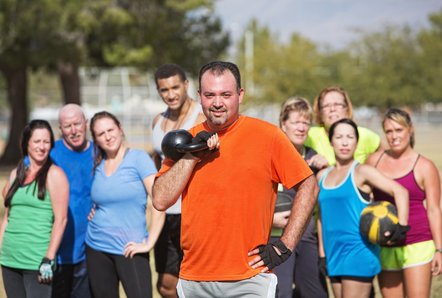

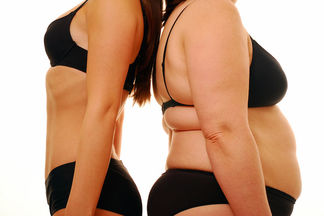


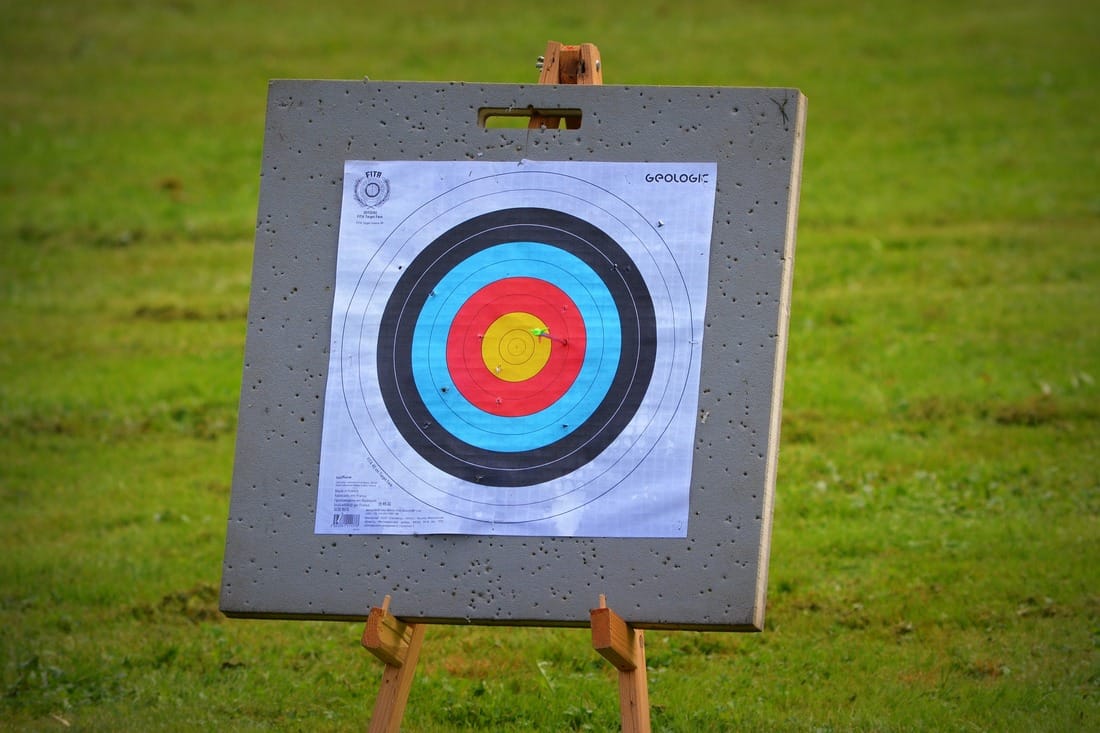




 RSS Feed
RSS Feed